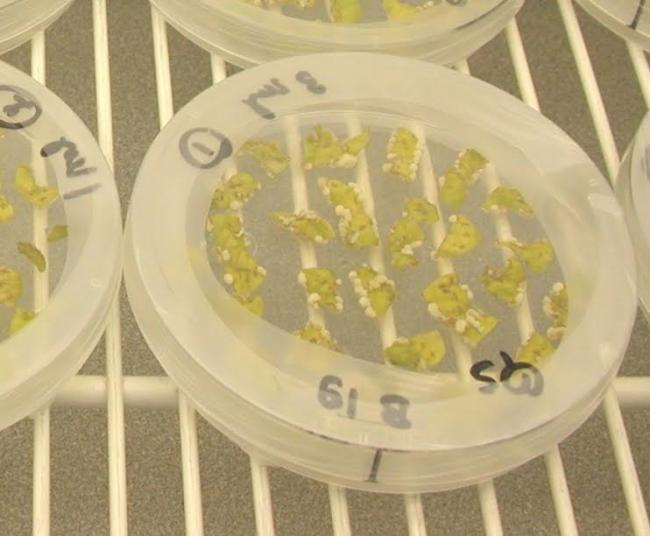
Biotech/GM Crops Surge to a New Peak of 185.1 Million Hectares in 2016
ISAAA’s report, “Global Status of Commercialized Biotech/GM Crops: 2016,” continues to demonstrate the long-standing benefits of biotech crops for farmers in developing and industrialized countries, as well as consumer benefits of recently approved and commercialized varieties.
“Biotech crops have become a vital agricultural resource for farmers around the world because of the immense benefits for improved productivity and profitability, as well as conservation efforts,” said ISAAA Chair of the Board, Paul S. Teng.
“With the commercial approvals and plantings of new varieties of biotech potatoes and apples, consumers will begin to enjoy direct benefits of biotechnology with produce that is not likely to spoil or be damaged, which in turn has the potential to substantially reduce food waste and consumer grocery costs.”
Examining other benefits of biotechnology, ISAAA reports that the adoption of biotech crops has reduced CO2 emissions equal to removing approximately 12 million cars from the road annually in recent years; conserved biodiversity by removing 19.4 million hectares of land from agriculture in 2015; and decreased the environmental impact with a 19% reduction in herbicide and insecticide use.
Additionally, in developing countries, planting biotech crops has helped alleviate hunger by increasing the incomes for 18 million small farmers and their families, bringing improved financial stability to more than 65 million people, it says.
“Biotechnology is one of the tools necessary in helping farmers grow more food on less land,” explained ISAAA Global Coordinator Randy Hautea.
“However, the promises of biotech crops can only be unlocked if farmers are able to buy and plant these crops, following a scientific approach to regulatory reviews and approvals.”
As more varieties of biotech crops are approved and commercialized for use by farmers, ISAAA expects to see adoption rates continue to climb and to benefit farmers in developing countries.
It says that among African nations where regulatory processes have traditionally created barriers to biotech crop adoption rates, advances are being realized.
In 2016, South Africa and Sudan increased the planting of biotech maize, soybean and cotton to 2.66 million hectares from 2.29 million hectares in 2015.
Elsewhere on the continent, a new wave of acceptance is emerging as Kenya, Malawi, Nigeria, Ethiopia, Ghana, Nigeria, Swaziland and Uganda make advances in regulatory review and commercial approvals for a variety of biotech crops, says ISAAA.
“Even with a long history of regulatory barriers, African farmers continue to adopt biotech crops because of the value they are realizing from the stability and productivity of biotech varieties,” said Hautea. “As more countries move forward with regulatory reviews for crops such as bananas, cowpeas and sorghum, we believe biotech crop plantings will continue to grow in Africa and elsewhere.”
2016 was the turning point for GM crops in India as it transcended from the shadows of the moratorium on Bt brinjal imposed in 2010 to the ultimate step of commercial release of GM mustard in 2016, it said.
It said India successfully completed the process of inviting public comments on biosafety dossier of GM mustard seeking permission for environmental release of transgenic mustard hybrid DMH-11 and parental lines containing events bn 3.6 and modbs 2.99 expressing barnase, barstar and bar genes developed indigenously by the Centre for Genetic Manipulation of Crop Plants (CGMCP) of the University of Delhi.
“The approval of GM mustard is absolutely critical for the moral of scientific & farming community and the overall development of science of biotechnology in India. Critical scientific mass in agriculture in our country is at a verge of collapse if GOI remains indecisive about the application of GM technology in agriculture, said Dr. CD Mayee, the President of the South Asia Biotechnology Centre (SABC).
Also in 2016, Brazil increased biotech area of maize, soybean, cotton and canola by a remarkable 11% – maintaining its ranking as the second largest producer of biotech crops after the United States. In Brazil, biotech soybeans account for 32.7 million hectares of the 91.4 million hectares grown worldwide.
For 2016, ISAAA also reports that there were improvements in the commercialization and plantings of biotech fruits and vegetables with direct consumer benefits. These included the commercial approvals of the Innate™ Russet Burbank Gen-2 potatoes that were approved by the U.S. Food and Drug Administration for sale in the United States and the Simplot Gen-1 White Russet™ brand potatoes that were approved by Health Canada for fresh market sale in Canada.
These biotech potato varieties have lower levels of asparagine, which reduces the creation of acrylamide during high-heat cooking. Additionally, the first commercially saleable quantities of Arctic® Apples were harvested in 2016, stored over the winter and are projected to be sold in U.S. grocery stores in 2017.
Image: Creative Commons/Wikipedia
Support Our Journalism
We cannot do without you.. your contribution supports unbiased journalism
IBNS is not driven by any ism- not wokeism, not racism, not skewed secularism, not hyper right-wing or left liberal ideals, nor by any hardline religious beliefs or hyper nationalism. We want to serve you good old objective news, as they are. We do not judge or preach. We let people decide for themselves. We only try to present factual and well-sourced news.







